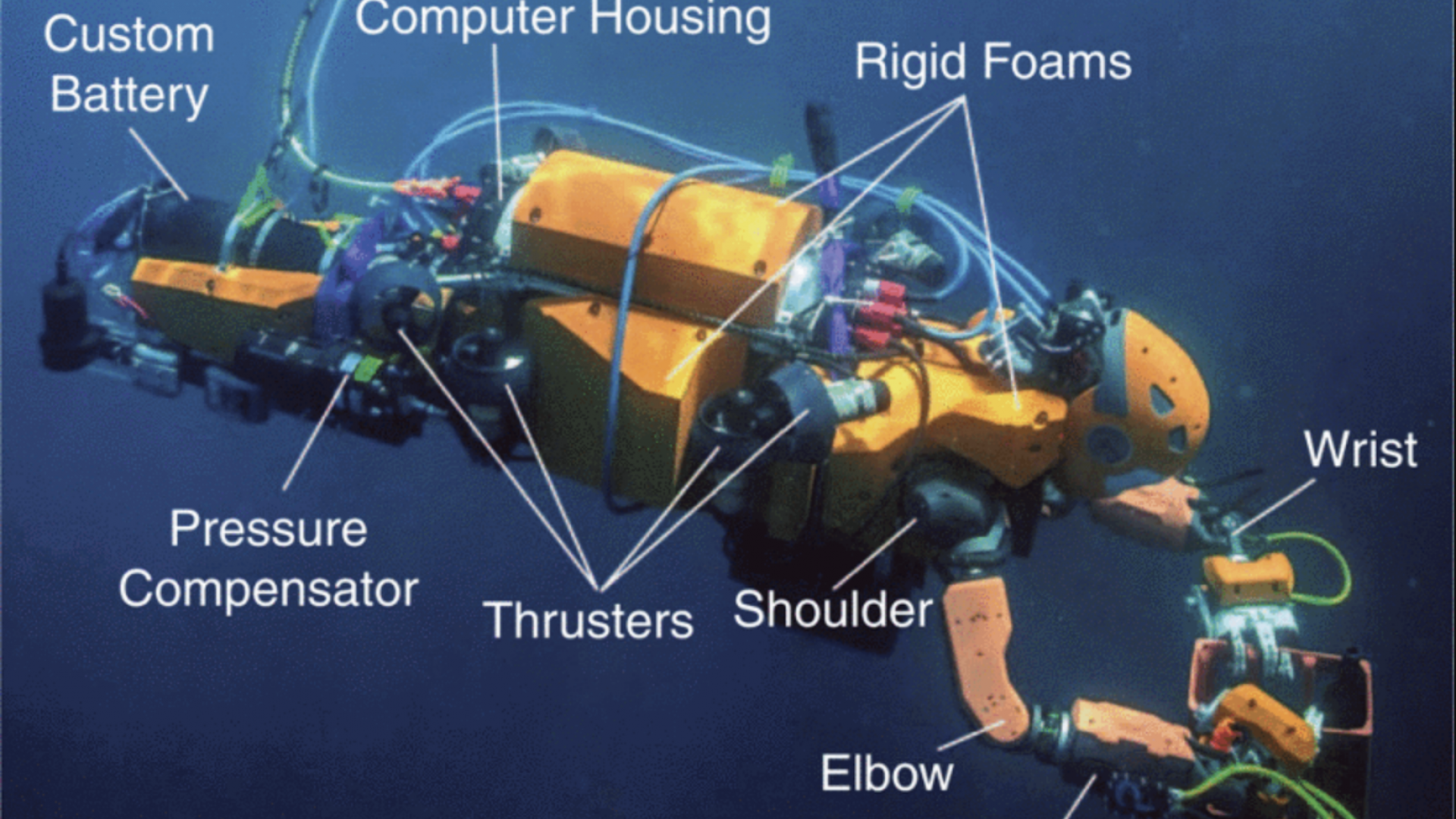Oussama Khatib, et al., "Ocean one: A robotic avatar for oceanic discovery." IEEE Robotics & Automation Magazine 23 (4), 2016, 20.
The promise of oceanic discovery has long intrigued scientists and explorers, whether with the idea of studying underwater ecology and climate change or with the hope of uncovering natural resources and historic secrets buried deep in archaeological sites. This quest to explore the oceans requires skilled human access, yet much of the oceans are inaccessible to human divers; nearly ninetenths of the ocean floor is at 1 km or deeper [1]. Accessing these depths is imperative since factors such as pollution and deep-sea trawling threaten ecology and archaeological sites. While remotely operated vehicles (ROVs) are inadequate for the task, a robotic avatar could go where humans cannot and still embody human intelligence and intentions through immersive interfaces.
